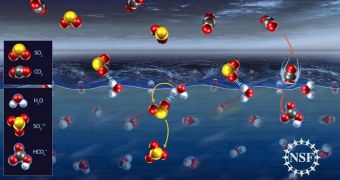Though it may seem a bit of an exaggeration at first, science has yet to make sense of what the most basic water molecules can do. Granted, they know their physical and chemical properties, but when it comes to how water behaves in large amounts, our understanding is still fairly limited.
Some physics and chemistry specialists argue that understanding water may hold the key to making more sense of life here on Earth, provided that the two are so intimately linked.
There are currently two main avenues of research in studying water – one that focuses on the interaction of molecules within bulk liquids, and another that studies have water behaves at the gas-liquid interface.
“We now appreciate that it is virtually impossible to grasp almost anything at the molecular level about biology, without understanding how water molecules interact with biomolecules within cells,” argues James Skinner.
“This includes fundamental processes like protein folding, photosynthesis and the biology of vision,” adds the expert, who is a theoretical chemist at the University of Wisconsin Madison (UWM).
He conducts research on water, and has dedicated the past 10 years of his life to making more sense of the precious liquid. His work is supported by US National Science Foundation (NSF) Division of Chemistry grant.
His research group includes a University of Oregon team led by expert Geraldine Richmond, University of Delaware physics and astronomy professor Krzysztof Szalewicz, and University of Illinois researcher Martin Gruebele.
In some of their experiments, the researchers are using infrared light to determine how individual molecules are swirling around inside liquid water. An “absorption spectrum” showing how much IR light is absorbed at each IR frequency can thus be produced.
“Data from these experiments contain information about local molecular environments. But this information is often hard to extract,” Skinner explains, quoted by PhysOrg.
“We use first principles calculations, molecular dynamics simulations, statistical mechanics, and basically any theoretical approach that will enable us to further our understanding,” he goes on to say.
“Experiments, coupled with new theoretical and computational techniques, will surely shed new light on the critical problem of water dynamics around biomolecules, and its effect on how they function,” the expert believes.
Other than medicine, physics and biology, important applications for the new data could conceivably be found in climate science, for understanding the world's water cycle, the physical changes of the atmosphere, and the dynamics of surface water.

 14 DAY TRIAL //
14 DAY TRIAL //